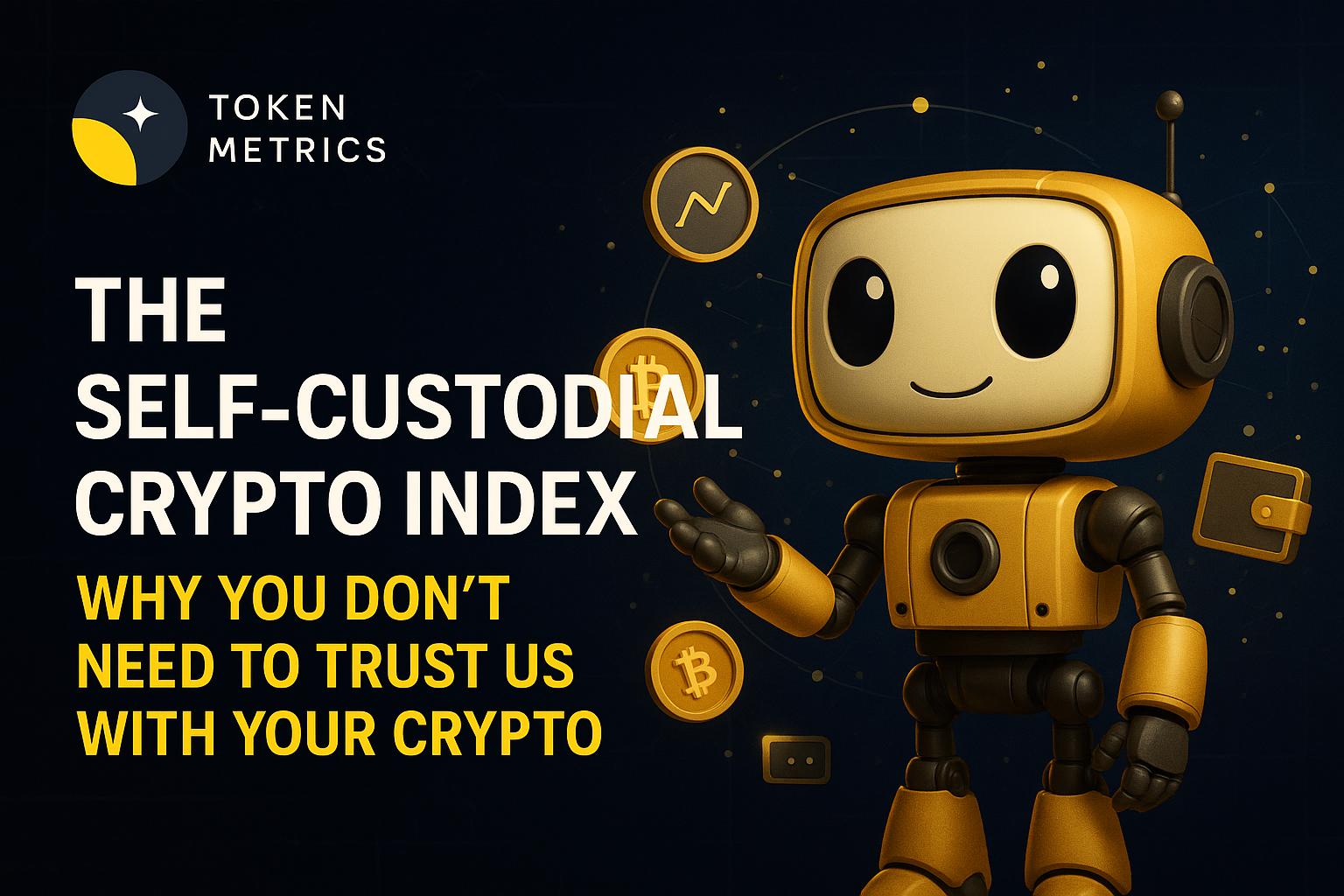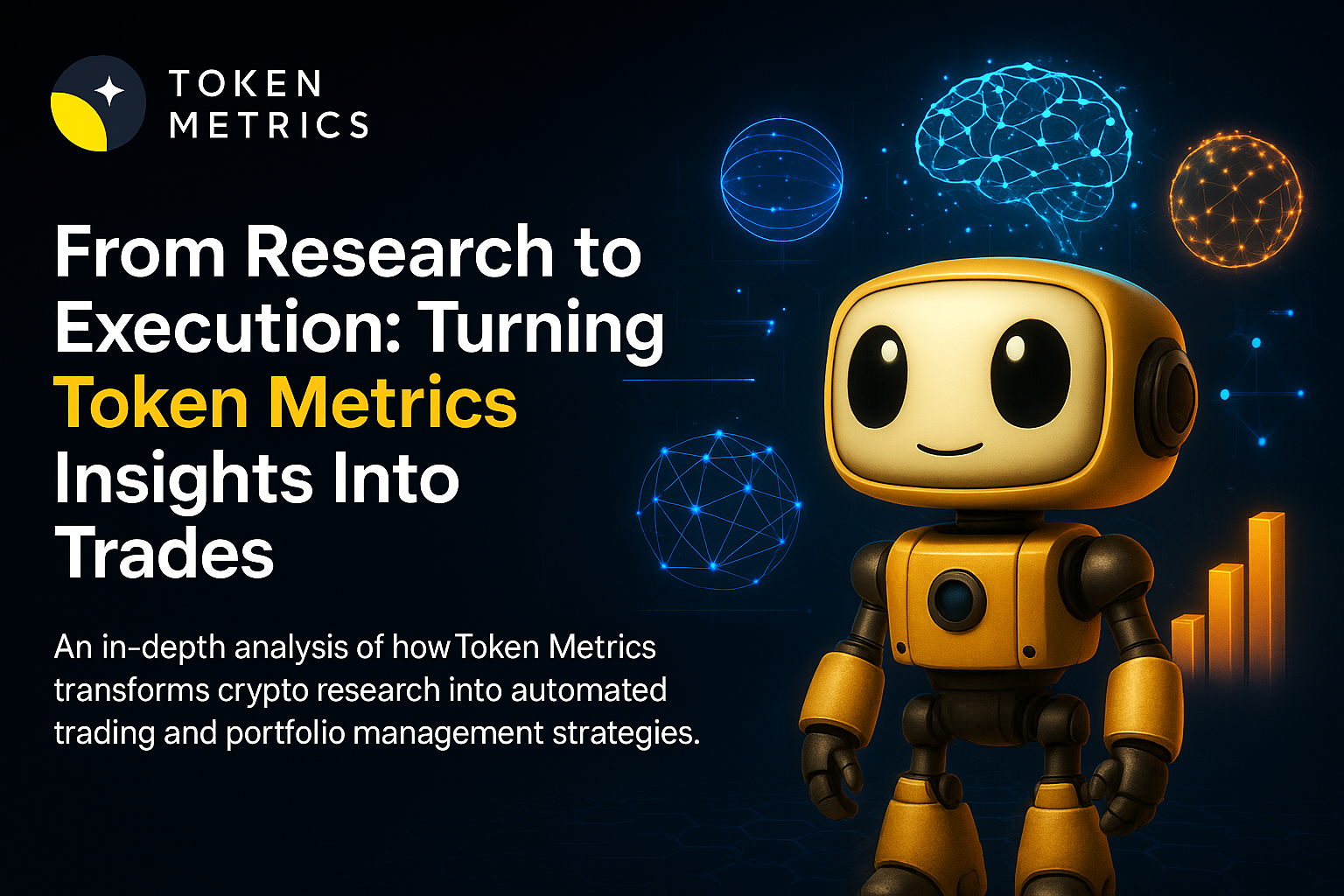
Best Crypto YouTube Channels in 2024 - Token Metrics Moon Awards

Welcome to the Token Metrics Moon Awards, a prestigious accolade in the cryptocurrency industry, honoring platforms, projects, and initiatives that have significantly impacted the industry.
Today, we are thrilled to introduce a new category of Moon Awards - the Best Crypto YouTube Channels in 2024.
Selection Process
At Token Metrics, we emphasize our audience, considering them the foundation of our operations. Our approach, deeply rooted in community engagement, ensures that the outcomes of our awards genuinely reflect crypto enthusiasts' sentiments and experiences.
Empowering Community Perspectives
The Moon Awards by Token Metrics aim to amplify the community's voice, offering a clear and focused assessment of the entities propelling advancements in the industry.
By actively involving our community members and utilizing user voting, we have thoughtfully curated a comprehensive list of the Best Crypto YouTube Channels in 2024, drawing from a wealth of survey data and user input.
This article will explore the best crypto YouTube channels in 2024, providing you with a comprehensive list of channels to follow and engage with.
List of the Best Crypto YouTube Channels in 2024

Token Metrics
In the Moon Awards survey, the Token Metrics YouTube channel secured the top position with 49.6% of the total votes.
Token Metrics is a well-known YouTube channel hosted by Ian Balina. Ian shares in-depth analysis and research on various cryptocurrencies.
Their team of experts uses data-driven metrics and machine-learning algorithms to evaluate the potential of different digital assets.
From fundamental analysis to technical analysis, Token Metrics covers many topics that can help you make informed investment decisions.
Coin Bureau
In the Moon Awards survey, the Coin Bureau YouTube channel secured the 2nd position with 16.5% of the total votes.
Coin Bureau is a popular YouTube channel hosted by Guy Turner. The channel offers unbiased reviews, market analysis, and insights into the latest trends in the crypto industry.
Whether you're a beginner or an experienced investor, Coin Bureau provides valuable information to help you navigate the complex world of cryptocurrencies.
Crypto Banter
In the Moon Awards survey, the Crypto Banter YouTube channel secured the 3rd position with 16.5% of the total votes.
Crypto Banter is a dynamic YouTube channel hosted by Ran Neuner that offers informative content and entertaining discussions about cryptocurrencies.
The hosts engage with industry experts, traders, and influencers to give viewers valuable insights and market updates. If you're looking for a channel that combines education with entertainment, Crypto Banter is a great choice.
Altcoin Daily
In the Moon Awards survey, the Altcoin Daily YouTube channel secured the 4th position with 5.8% of the total votes.
Altcoin Daily is a popular YouTube channel Aaron and Austin Arnold host focusing on altcoins and blockchain projects. The channel updates the latest news, market trends, and cryptocurrency investment opportunities daily.
With a strong emphasis on research and analysis, Altcoin Daily aims to educate viewers about the potential of different digital assets.
Ivan on Tech
In the Moon Awards survey, Ivan on Tech YouTube channel secured the 5th position with 2.8% of the total votes.
Ivan on Tech is a widely recognized YouTube channel hosted by Ivan Liljeqvist, a blockchain educator and developer. The channel covers various topics, including blockchain technology, cryptocurrencies, and decentralized finance (DeFi).
Ivan's in-depth knowledge and ability to explain complex concepts in a simple manner make his channel a valuable resource for both beginners and experienced crypto enthusiasts.
Alex Becker
In the Moon Awards survey, Alex Becker's YouTube channel secured the 6th position with 2.3% of the total votes.
Alex Becker is a prominent figure in the crypto community, and his YouTube channel offers a unique perspective on investing and entrepreneurship. While not solely focused on cryptocurrencies,
Alex provides insights into various investment strategies and opportunities, including the crypto market. His channel is an excellent resource for those looking to broaden their investment horizons.
Virtual Bacon
In the Moon Awards survey, the Virtual Bacon YouTube channel secured the 7th position with 2% of the total votes.
Virtual Bacon is a YouTube channel hosted by Dennis dedicated to providing educational content about cryptocurrencies and blockchain technology.
Virtual Bacon covers various topics, including tutorials, market analysis, and project reviews. With a focus on simplifying complex concepts, Virtual Bacon's channel is a valuable resource for beginners in crypto.
Elliotrades
In the Moon Awards survey, Elliotrades YouTube channel secured the 8th position with 1.7% of the total votes.
Elliotrades is a YouTube channel that offers technical analysis and market insights for cryptocurrencies. The host, Elliot, combines his expertise in chart analysis with fundamental research to provide viewers with a well-rounded perspective on the market.
Elliotrades offers valuable insights to help you make informed decisions whether you're interested in short-term trading or long-term investing.
Ben Armstrong
In the Moon Awards survey, Ben Armstrong's YouTube channel secured the 9th position with 1.5% of the total votes.
Ben Armstrong, also known as BitBoy Crypto, is a popular YouTube personality in the crypto community. His channel covers various topics, including market updates, project reviews, and interviews with industry experts.
With his engaging personality and informative content, Ben Armstrong's channel is a go-to resource for many crypto enthusiasts.
Paul Barron Network
In the Moon Awards survey, Paul Barron Network's YouTube channel secured the 10th position with 1.4% of the total votes.
The Paul Barron Network is a YouTube channel that explores the intersection of technology and finance, including cryptocurrencies. The channel provides insights into the latest trends, market analysis, and interviews with industry leaders.
Paul Barron's unique perspective and in-depth coverage make his channel a valuable resource for crypto enthusiasts.
Conclusion
Staying informed and engaged in cryptocurrencies is essential for making informed investment decisions. The YouTube channels listed above offer a wealth of knowledge, market analysis, and educational content to help you navigate the ever-changing crypto landscape.
Whether you're a beginner or an experienced investor, these channels provide valuable insights and perspectives to enhance your understanding of cryptocurrencies.
Remember always to research and consider multiple sources of information before making any investment decisions in the crypto space.
Disclaimer
The information provided on this website does not constitute investment advice, financial advice, trading advice, or any other advice, and you should not treat any of the website's content as such.
Token Metrics does not recommend buying, selling, or holding any cryptocurrency. Conduct your due diligence and consult your financial advisor before making investment decisions.

.svg)

Create Your Free Token Metrics Account

.png)




%201.svg)
%201.svg)


%201.svg)









.svg)




.png)